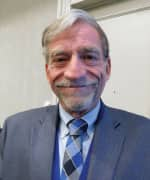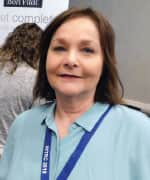Life Extension Magazine®
Massage therapy can be of benefit for pain, fatigue, anxiety, stiffness, and many other ailments in addition to being relaxing and feeling good.

The opioid crisis (skyrocketing use of legal and illegal opioid drugs), in combination with increasing complaints of chronic pain, has caused many people to give more attention to non-drug therapies.
The preference for drug treatments over other therapies by medical professionals has been a consequence of FDA drug-centered medicine.
Only large drug companies can afford the large, clinical trials that the FDA requires to approve a drug therapy. No one is going to spend hundreds of millions of dollars on clinical trials for unpatentable therapies like massage, yoga, or acupuncture.
Reviews of massage clinical trials often conclude that the evidence is weaker than for drug-based clinical trials because large, well-funded trials have not been conducted for massage.
Massage therapy clinical trials face another disadvantage because the quality of massage treatment is not uniform. Massage therapists have different strengths, skills, and techniques. And there are different types of massage. Swedish (relaxation, stroking) massage can be better therapy for anxiety, deep tissue (more pressure) massage can be better therapy for pain or fatigue, and Thai (stretching) massage can be better therapy for stiffness.
Use of opioid drugs for pain has become such a prominent social issue that the problem created by FDA drug-centered medicine can no longer be ignored. Nor can drug companies facing ever-expanding lawsuits ignore the problem.
This article covers presentations on the scientific value of therapeutic massage given at recent massage conferences.
Opioid Crisis

Robert Kerns, PhD, (Professor of Psychiatry, Neurology and Psychology, Yale University, New Haven, Connecticut) believes that the opioid crisis could have been prevented if massage, exercise, yoga, progressive relaxation, and other forms of non-drug therapy were used for treatment of pain.1 Use of the prescription opioid drug oxycodone for cancer-related pain increased four-fold between 1997 and 2002. Illicit drug abuse of prescription opioid drugs now exceeds that of the illegal drugs heroin or cocaine.2
Opioid drugs can be beneficial for acute (short term) pain relief but have not proven beneficial for chronic (long term, over six months) pain. Common side effects of opioids include constipation, nausea, and excessive sleepiness.3 Long-term use of opioid drugs also produces tolerance (the patient requires an increase in the amounts of opioids necessary to relieve pain).4
Massage can be of benefit for pain, without side effects.5 Massage is particularly beneficial for cancer pain.6
Pain in Fascia

Helene Langevin, MD (Director, National Center for Complementary and Integrative Health, Bethesda, Maryland) has studied the cause and treatment of inflamed fascia (connective tissue surrounding organs) in chronic-pain conditions. Fascia can be infiltrated with nerves that contribute to the sensation of pain. She has shown an accumulation of additional connective tissue in areas of the back where patients experience lower-back pain.7 Dr. Langevin has shown that stretching of connective tissue in the back, which could be done with massage or yoga, may reduce the inflammation and/or fibrosis seen in lower-back-pain subjects.8
Dr. Langevin believes a similar kind of inflammation is seen in repetitive-strain injury, as in lower back pain.9 Massage therapy can reduce inflammation and neural fibrosis due to repetitive-strain injury.10 Similarly, a combination of massage and trigger-point therapy has been shown to be an effective treatment for carpal tunnel syndrome (a repetitive-strain injury of the wrist).11 Persons suffering from repetitive-strain injury generally seek help after developing symptoms, but massage therapy to the affected tissues may prevent repetitive-strain injury before it happens.12
Massage for Breast Cancer Survivors

Jeanne Massingill, LMT (Owner, The Oaks Medical Massage Therapy Clinic, Rocky River, Ohio) has used massage therapy to treat breast cancer survivors. Massage has been shown to relieve pain, anxiety, and improve the overall well-being of women whose breast has been removed due to cancer.13
Tendons join muscle to bone, ligaments join bone to bone, but fascia is a thin sheet of connective tissue that surrounds and encases every muscle, nerve, bone, blood vessel and organ in the body, securing and linking them.14 Manual therapy can reduce fascial tightness and improve blood circulation.15 Stiffness of fascia has been associated with cancer growth.16
Up to 60% of breast cancer surgery survivors experience chronic pain.17 Myofascial massage is a massage technique that applies pressure and stretching to fascia. Massingill conducted a clinical trial of myofascial massage on patients complaining of chronic pain following breast cancer surgery. Compared to Swedish massage or light touch, patients receiving myofascial massage had less pain, better mobility, and improved general health.18
Cervicogenic Headache

Til Luchau (Lead Instructor and Director of Advanced Trainings, Lafayette, Colorado) is concerned with treatment for cervicogenic headaches. A cervicogenic headache is a headache resulting from neck pain. An estimated 15%-20% of headaches are cervicogenic.19 Women have cervicogenic headaches more frequently than men.20 Massage therapy combined with neck exercises can relieve cervicogenic headache.21 Benefit has also been reported for manual therapy on trigger points of the muscle running from the back of the skull to the center of the chest (the sternocleidomastoid muscle).22
Low Back Pain

Kathryn Stewart, BS, LMT (Professor, Family and Community Medicine, University of Kentucky College of Medicine, Lexington, Kentucky) is interested in treatment for lower back pain. Lower back pain is a very common cause of disabilities, which is more frequently seen in persons of lower socioeconomic status.23
Stewart is an advocate of evaluating massage therapy for lower back pain by having patients directly seek care from community massage therapists.24 In one study involving 10 massage sessions, almost half of the patients showed reduced pain after 12 weeks, and 40% continued to show relief at 24 weeks.25
Fibromyalgia

Julie Goodwin, LMT (Instructor, Massage Therapy Program, Pima Community College, Tucson, Arizona) specializes in massage therapy for patients with fibromyalgia. Fibromyalgia is characterized by widespread pain, which can lead to sleep difficulties and general fatigue. There is a wide range of prevalence estimates, some as high as 12%, in which females are about three times more likely to have the condition than males.26 Systematic reviews of a variety of massage techniques show treatment of over five weeks to reduce pain, anxiety, and depression.27 All massage techniques improved health-related quality of life.28
Massage for Athletes

Lee Stang, LMT (Owner, Bridges To Health Therapeutic Massage Center, Hendersonville, North Carolina) gives massage therapy to athletes. Massage has been shown to improve blood vessel function after exercise-induced muscle injury.29 Triathlon athletes who received massage therapy after completion of a competition reported better recovery from pain and fatigue.30 Massage has been used to relieve travel fatigue in athletes who have spent many hours confined to airplane seats across many time zones.31
In a well-controlled experiment, muscle samples were taken from both legs of healthy young males who had received massage on only one randomly selected leg after exercise. The massaged leg showed reduced inflammation and increased formation of energy-producing mitochondria cellular components, compared to the unmassaged leg.32
Manual Lymphatic Drainage

Judy Stahl, MA (Founder, Prescott Center for Massage Therapy, Prescott, Arizona) has expertise in the type of massage known as manual lymphatic drainage (MLD). Lymph is a watery fluid containing waste products that flows from body tissues to lymph nodes, and then to the heart, independent of the blood circulatory system. Lymph is weakly propelled by muscle contraction, so it moves much more slowly than blood. Lymph nodes break down debris in the lymph before the lymph is returned to the circulatory system (returned to the heart).33
The brain has an independent lymphatic system known as the glymphatic system. The glymphatic system is most active during sleep, which is part of the reason why sleep deprivation reduces mental function.34
MLD massage is used to compensate for insufficient fluid flow in the lymphatic system. Orthopedic (bone or muscle) injuries often result in impaired lymph flow, which can be improved by MLD.35 Application of MLD prior to surgery for varicose veins can improve the outcome.36 Cellulite has also been shown to be reduced by MLD.37
Breast cancer surgery often removes lymph nodes and damages the lymphatic system. Up to 49% of women whose breast has been removed experience lymphatic swelling.38 MLD has been shown to reduce lymphatic swelling following breast cancer treatment.39
Massage for Anxiety

Mark Hyman Rapaport, MD (Chairman, Department of Psychiatry and Behavioral Sciences, Emory University School of Medicine, Atlanta, Georgia) is interested in the effectiveness of Swedish massage therapy to reduce anxiety or fatigue. Studies by earlier researchers have shown that massage can reduce anxiety.40 A study of patients randomized to receive or not receive massage after cardiovascular surgery showed reduced pain, anxiety, and tension in the massaged patients.41
Dr. Rapaport has shown that six weeks of Swedish massage can significantly reduce fatigue in cancer treatment survivors when compared to light touch.42 Measuring blood and saliva samples of persons who had received either 45 minutes of light touch or Swedish massage twice weekly for five weeks, Dr. Rapaport found an increase in the social-binding hormone oxytocin, and a decrease in the stress hormone cortisol.43
Generalized anxiety disorder is a condition characterized by uncontrollably excessive worry. Dr. Rapaport conducted a clinical trial in which general-anxiety-disorder patients were randomly assigned to receive either Swedish massage or light touch twice weekly for six weeks. Compared to light touch, the patients receiving Swedish massage showed a significant reduction in worry beginning at the end of the third week, based on questionnaires they completed.44
Concluding Remarks
Massage is not simply a self-indulgence, but it can be a valuable therapy for many conditions. Although studies proving the benefits of massage are often small, in size and funding, side effects are rare. Physicians should be encouraged to try massage therapy before trying drugs.
If you have any questions on the scientific content of this article, please call a Life Extension® Wellness Specialist at 1-866-864-3027.
References
- Qaseem A, Wilt TJ, McLean RM, et al. Noninvasive Treatments for Acute, Subacute, and Chronic Low Back Pain: A Clinical Practice Guideline From the American College of Physicians. Ann Intern Med. 2017 Apr 4;166(7):514-30.
- Van Zee A. The promotion and marketing of oxycontin: commercial triumph, public health tragedy. Am J Public Health. 2009 Feb;99(2):221-7.
- Manchikanti L, Vallejo R, Manchikanti KN, et al. Effectiveness of long-term opioid therapy for chronic non-cancer pain. Pain Physician.2011 Mar-Apr;14(2):E133-56.
- Available at: https://www.uspharmacist.com/article/acute-pain-management-in-patients-with-opioid-tolerance. Accessed September 23, 2020.
- Nahin RL, Boineau R, Khalsa PS, et al. Evidence-Based Evaluation of Complementary Health Approaches for Pain Management in the United States. Mayo Clin Proc. 2016 Sep;91(9):1292-306.
- Lee SH, Kim JY, Yeo S, et al. Meta-Analysis of Massage Therapy on Cancer Pain. Integr Cancer Ther. 2015 Jul;14(4):297-304.
- Langevin HM, Stevens-Tuttle D, Fox JR, et al. Ultrasound evidence of altered lumbar connective tissue structure in human subjects with chronic low back pain. BMC Musculoskelet Disord. 2009 Dec 3;10:151.
- Corey SM, Vizzard MA, Bouffard NA, et al. Stretching of the back improves gait, mechanical sensitivity and connective tissue inflammation in a rodent model. PLoS One. 2012;7(1):e29831.
- Barbe MF, Barr AE, Gorzelany I, et al. Chronic repetitive reaching and grasping results in decreased motor performance and widespread tissue responses in a rat model of MSD. J Orthop Res. 2003 Jan;21(1):167-76.
- Bove GM, Delany SP, Hobson L, et al. Manual therapy prevents onset of nociceptor activity, sensorimotor dysfunction, and neural fibrosis induced by a volitional repetitive task. Pain. 2019 Mar;160(3):632-44.
- Elliott R, Burkett B. Massage therapy as an effective treatment for carpal tunnel syndrome. J Bodyw Mov Ther. 2013 Jul;17(3):332-8.
- Bove GM, Harris MY, Zhao H, et al. Manual therapy as an effective treatment for fibrosis in a rat model of upper extremity overuse injury. J Neurol Sci. 2016 Feb 15;361:168-80.
- Drackley NL, Degnim AC, Jakub JW, et al. Effect of massage therapy for postsurgical mastectomy recipients. Clin J Oncol Nurs. 2012 Apr;16(2):121-4.
- Available at: https://www.hopkinsmedicine.org/health/wellness-and-prevention/muscle-pain-it-may-actually-be-your-fascia. Accessed September 28, 2020.
- Findley T, Chaudhry H, Stecco A, et al. Fascia research--a narrative review. J Bodyw Mov Ther. 2012 Jan;16(1):67-75.
- Langevin HM, Keely P, Mao J, et al. Connecting (T)issues: How Research in Fascia Biology Can Impact Integrative Oncology. Cancer Res. 2016 Nov 1;76(21):6159-62.
- Wang L, Guyatt GH, Kennedy SA, et al. Predictors of persistent pain after breast cancer surgery: a systematic review and meta-analysis of observational studies. CMAJ. 2016 Oct 4;188(14):E352-E61.
- Massingill J, Jorgensen C, Dolata J, et al. Myofascial Massage for Chronic Pain and Decreased Upper Extremity Mobility After Breast Cancer Surgery. Int J Ther Massage Bodywork.2018 Aug;11(3):4-9.
- Page P. Cervicogenic headaches: an evidence-led approach to clinical management. Int J Sports Phys Ther. 2011 Sep;6(3):254-66.
- Chaibi A, Russell MB. Manual therapies for cervicogenic headache: a systematic review. J Headache Pain. 2012 Jul;13(5):351-9.
- Youssef EF, Shanb AS. Mobilization versus massage therapy in the treatment of cervicogenic headache: a clinical study. J Back Musculoskelet Rehabil. 2013;26(1):17-24.
- Bodes-Pardo G, Pecos-Martin D, Gallego-Izquierdo T, et al. Manual treatment for cervicogenic headache and active trigger point in the sternocleidomastoid muscle: a pilot randomized clinical trial. J Manipulative Physiol Ther. 2013 Sep;36(7):403-11. ShmaMunk N, Stewart K, Love MM, et al. The Intersection of Massage Practice and Research: Community Massage Therapists as Research Personnel on an NIH-funded Effectiveness Study. Int J Ther Massage Bodywork. 2014 Jun;7(2):10-9.gel A, Foley R, Ibrahim H. Epidemiology of Chronic Low Back Pain in US Adults: Data From the 2009-2010 National Health and Nutrition Examination Survey. Arthritis Care Res (Hoboken). 2016 Nov;68(11):1688-94.
- Elder WG, Munk N, Love MM, et al. Real-World Massage Therapy Produces Meaningful Effectiveness Signal for Primary Care Patients with Chronic Low Back Pain: Results of a Repeated Measures Cohort Study. Pain Med. 2017 Jul 1;18(7):1394-405.
- Arnold LM, Bennett RM, Crofford LJ, et al. AAPT Diagnostic Criteria for Fibromyalgia. J Pain. 2019 Jun;20(6):611-28.
- Li YH, Wang FY, Feng CQ, et al. Massage therapy for fibromyalgia: a systematic review and meta-analysis of randomized controlled trials. PLoS One. 2014;9(2):e89304.
- Yuan SL, Matsutani LA, Marques AP. Effectiveness of different styles of massage therapy in fibromyalgia: a systematic review and meta-analysis. Man Ther. 2015 Apr;20(2):257-64.
- Franklin NC, Ali MM, Robinson AT, et al. Massage therapy restores peripheral vascular function after exertion. Arch Phys Med Rehabil. 2014 Jun;95(6):1127-34.
- Nunes GS, Bender PU, de Menezes FS, et al. Massage therapy decreases pain and perceived fatigue after long-distance Ironman triathlon: a randomised trial. J Physiother. 2016 Apr;62(2):83-7.
- Calleja-Gonzalez J, Mielgo-Ayuso J, Sampaio J, et al. Brief ideas about evidence-based recovery in team sports. J Exerc Rehabil. 2018 Aug;14(4):545-50.
- Crane JD, Ogborn DI, Cupido C, et al. Massage therapy attenuates inflammatory signaling after exercise-induced muscle damage. Sci Transl Med. 2012 Feb 1;4(119):119ra13.
- Available at: https://www.ncbi.nlm.nih.gov/books/NBK513247/. Accessed September 23, 2020.
- Xie L, Kang H, Xu Q, et al. Sleep drives metabolite clearance from the adult brain. Science. 2013 Oct 18;342(6156):373-7.
- Majewski-Schrage T, Snyder K. The Effectiveness of Manual Lymphatic Drainage in Patients With Orthopedic Injuries. J Sport Rehabil. 2016 Feb;25(1):91-7.
- Molski P, Kruczynski J, Molski A, et al. Manual lymphatic drainage improves the quality of life in patients with chronic venous disease: a randomized controlled trial. Arch Med Sci. 2013 Jun 20;9(3):452-8.
- Bayrakci Tunay V, Akbayrak T, Bakar Y, et al. Effects of mechanical massage, manual lymphatic drainage and connective tissue manipulation techniques on fat mass in women with cellulite. J Eur Acad Dermatol Venereol. 2010 Feb;24(2):138-42.
- Warren AG, Brorson H, Borud LJ, et al. Lymphedema: a comprehensive review. Ann Plast Surg. 2007 Oct;59(4):464-72.
- Ezzo J, Manheimer E, McNeely ML, et al. Manual lymphatic drainage for lymphedema following breast cancer treatment. Cochrane Database Syst Rev. 2015 May 21(5):CD003475.
- Moyer CA, Rounds J, Hannum JW. A meta-analysis of massage therapy research. Psychol Bull. 2004 Jan;130(1):3-18.
- Cutshall SM, Wentworth LJ, Engen D, et al. Effect of massage therapy on pain, anxiety, and tension in cardiac surgical patients: a pilot study. Complement Ther Clin Pract. 2010 May;16(2):92-5.
- Kinkead B, Schettler PJ, Larson ER, et al. Massage therapy decreases cancer-related fatigue: Results from a randomized early phase trial. Cancer. 2018 Feb 1;124(3):546-54.
- Rapaport MH, Schettler P, Bresee C. A preliminary study of the effects of repeated massage on hypothalamic-pituitary-adrenal and immune function in healthy individuals: a study of mechanisms of action and dosage. J Altern Complement Med. 2012 Aug;18(8):789-97.
- Rapaport MH, Schettler P, Larson ER, et al. Acute Swedish Massage Monotherapy Successfully Remediates Symptoms of Generalized Anxiety Disorder: A Proof-of-Concept, Randomized Controlled Study. J Clin Psychiatry. 2016 Jul;77(7):e883-91.

